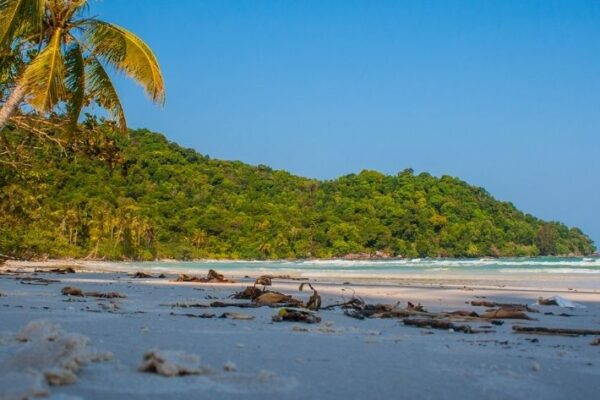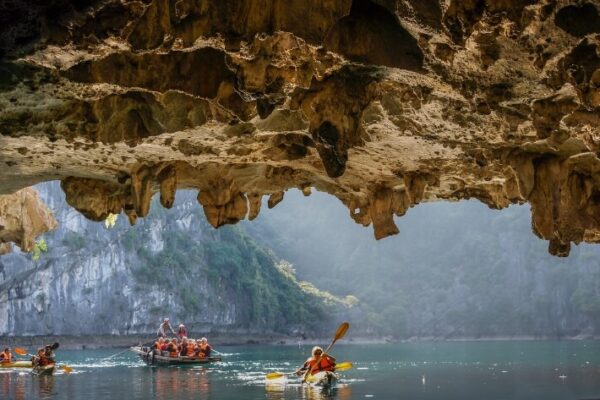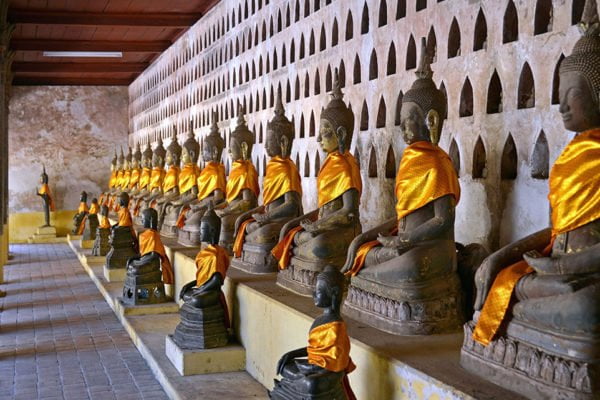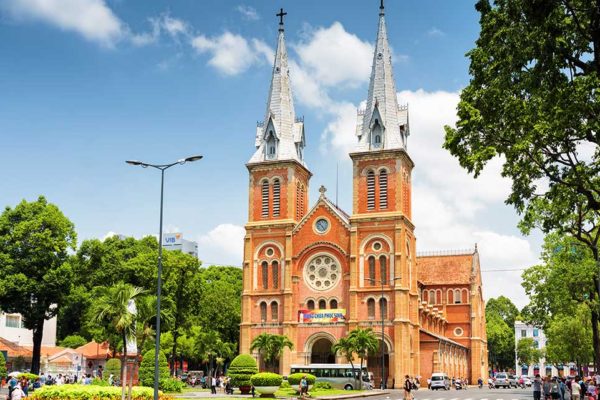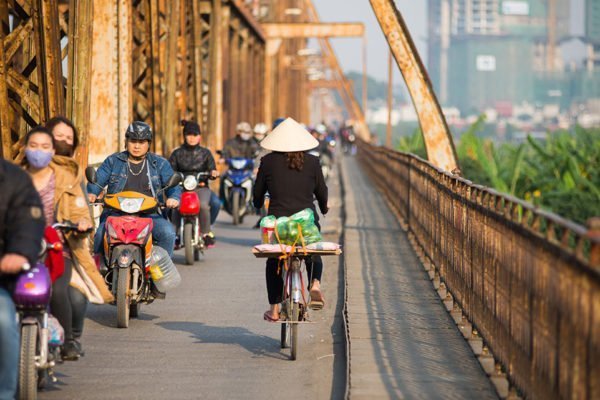Top 10 Indochina War Sites Every History Traveler Must Visit
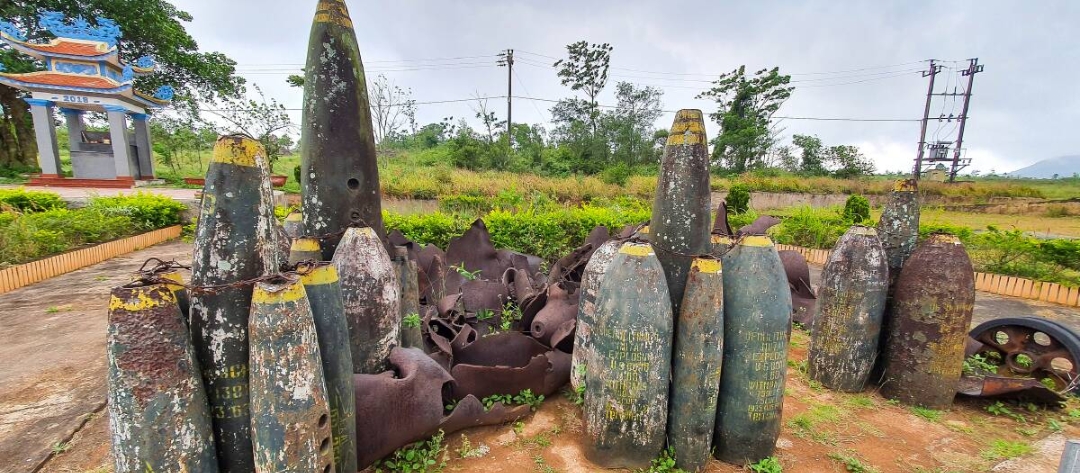
The Indochina region, comprising Vietnam, Laos, and Cambodia, carries some of the most powerful memories of 20th-century history. Across these three countries, the scars of the Indochina Wars remain visible in tunnels, caves, battlefields, and museums, each telling stories of resilience, sacrifice, and survival. From the fierce battlegrounds of Vietnam to the hidden underground cities of Laos and the genocide memorials in Cambodia, these sites not only preserve the past but also offer travelers a chance to reflect on its impact today.
In this guide, we will explore the top 10 Indochina war sites that bring the past to life for every history traveler.
Why You Should Visit Indochina War Sites
Connect with Living History
When you join an Indochina war history tour, you step far beyond classroom facts and enter the landscapes where history was lived. In Vietnam’s Vinh Moc Tunnels, for instance, families once survived underground for years, carving out schools, kitchens, and hope in the dark. The tunnels remain a haunting yet powerful reminder of endurance. Walking through them today, you feel the resilience of a people who carried on through impossible times.
Understand Regional Context
The richness of war sites in Vietnam, Laos, and Cambodia lies in their diversity. Each country holds a different chapter of the Indochina wars. In Cambodia, Phnom Penh’s Tuol Sleng Genocide Museum bears witness to human loss and survival. Laos preserves its hidden stronghold in the Viengxay Caves, a vast underground city where thousands found refuge.
Experience Emotional Journeys
Historical travel in Indochina is not only about facts, it is also about feelings. Sites like Quang Tri Citadel pull visitors into a space where the weight of sacrifice is still tangible. Scarred walls and solemn grounds invite reflection, allowing you to pause and acknowledge the resilience behind today’s peace. These places evoke emotions that are difficult to capture in words: grief, respect, and admiration for the strength of the human spirit.
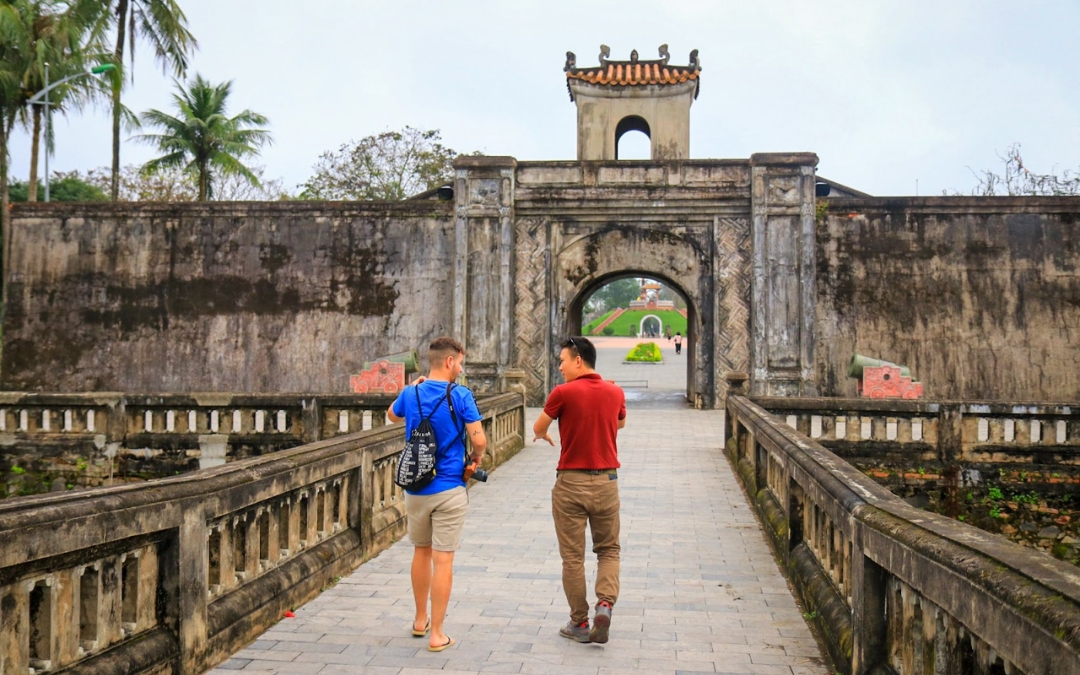
The Quang Tri Citadel stands as a solemn witness to fierce battles.
Support Heritage and Communities
Choosing to visit Indochina war sites is more than a journey into history; it is a way to sustain living heritage. Ticket sales, guided tours, and local storytelling provide crucial income for communities that have carried these memories for generations.
Travelers not only gain knowledge but also contribute to preserving fragile landmarks and supporting families who share their culture with honesty and pride. In this way, every visit becomes a partnership: you learn from the past while helping ensure its stories endure.
Top 10 Indochina War Sites to Visit in Vietnam, Laos, and Cambodia
From Vietnam’s battlefields to Laos’s hidden caves and Cambodia’s memorials, these are the top Indochina war sites every traveler should explore.
Vinh Moc Tunnels (Quang Tri, Vietnam)
The Vinh Moc Tunnels in Quang Tri are among the most remarkable war heritage sites in Vietnam, symbolizing survival and resilience during the Indochina Wars. Built between 1965 and 1966 with over 18,000 workdays and 6,000m³ of soil excavated, the tunnels housed about 60 families. During their 2,000 days of use, 17 babies were born underground, reflecting extraordinary endurance.
The system spans more than 2km, arranged on three levels (8–23m deep) with 13 entrances leading to the sea and the hills. Inside, visitors find dwellings, wells, a maternity room, meeting halls, and Hoang Cam kitchens designed to hide smoke. Exhibitions, bomb shells, and documentary screenings enrich the experience, while guides—often descendants of tunnel residents—share authentic stories.
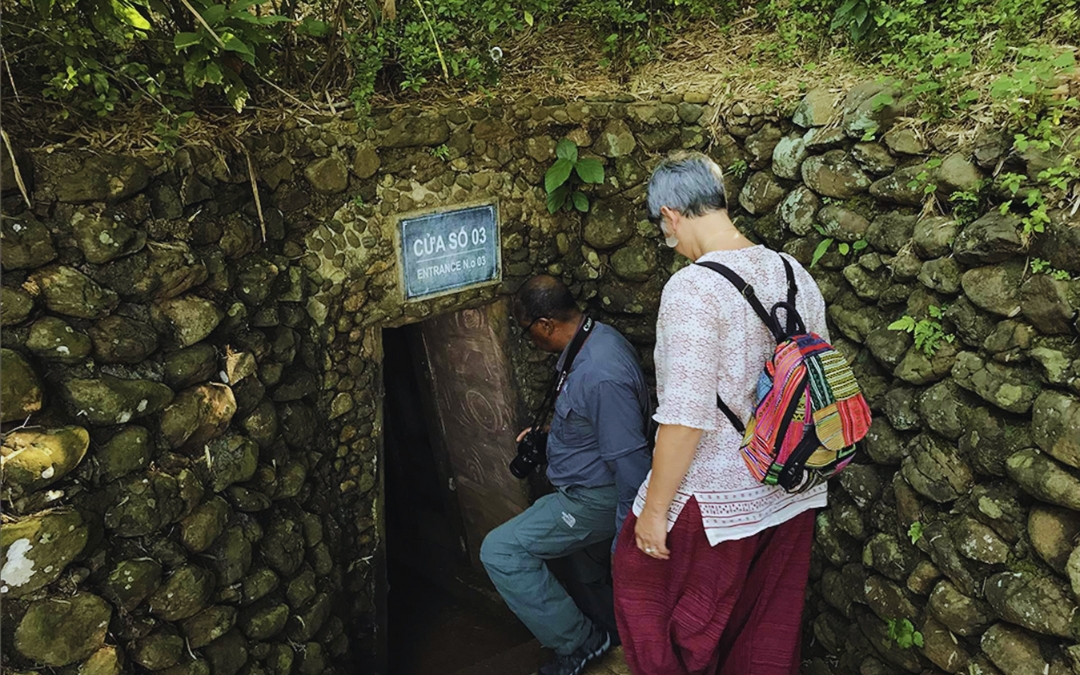
Deep underground, the Vinh Moc Tunnels reveal stories of survival.
How to Visit
- Opening Hours: 07:00–17:00 daily.
- Best Time: March–September; early morning or after 15:00.
- Location & Transportation: The tunnels are 37 km north of Dong Ha, 14 km east of Ho Xa, and 6 km north of Cua Tung. From Hue it takes about 2.5 hours (100 km), from Hoi An around 4.5 hours (240 km), and from Quang Binh (Dong Hoi) about 1.5 hours (80 km). Visitors can join a DMZ tour from Hue, take a taxi or Grab from Dong Ha, or rent a motorbike for flexible travel.
Tips: Wear sneakers, bring a flashlight & water, respect artifacts, mind low ceilings, not suitable for severe claustrophobia.
The Ho Chi Minh Trail (multi-country)
The Ho Chi Minh Trail was a strategic supply network running through the Annamite Range, largely via Laos, connecting North and South Vietnam. It included roads, hospitals, and fuel depots, sustaining the war effort in the South. Its operation drew Laos and Cambodia into the conflict despite their nominal neutrality.
In response, the U.S. launched an extensive bombing campaign in Laos from 1964 to 1973, making it the most heavily bombed country in history. Despite massive civilian suffering, the campaign failed to weaken the North Vietnamese and instead fueled resentment across the region.
Today, travelers can explore sections of the trail through motorbike and 4×4 tours, trekking routes, and small museums. Many routes reveal jungle tracks, remnants of fuel depots, and hidden caves, offering both history and adventure.
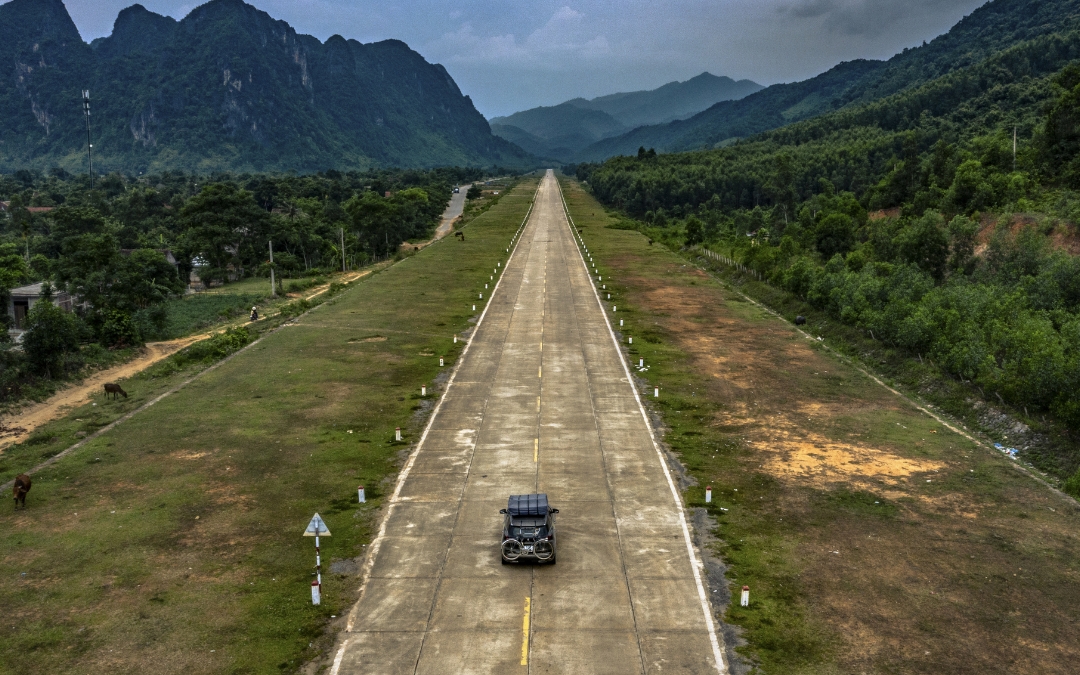
The Ho Chi Minh Trail once linked nations through a hidden supply route.
How to Visit
- Opening Hours: No fixed hours; tours operate in daylight and often span multiple days.
- Best Time: Dry season (October–March) when terrain is easier; rainy season makes routes muddy and difficult.
- Location & Transportation: Key access points are in Central Vietnam and southern Laos. Routes often begin from Hue or Vientiane before continuing by motorbike, jeep, or bicycle with a guide.
Tips: Always go with experienced operators due to challenging terrain and the risk of unexploded ordnance. Ensure you are comfortable with off-road travel and bring essentials for remote conditions.
Dien Bien Phu (Northwest Vietnam)
Dien Bien Phu, a remote town in northwest Vietnam, is world-famous as the site of the decisive Battle of Dien Bien Phu (1954). Here, French colonial forces were defeated by the Viet Minh with support from China and the Soviet Union, forcing France to withdraw from Indochina. This victory directly led to the Geneva Accords, ending the First Indochina War and marking a turning point in Vietnam’s modern history.
Today, Dien Bien Phu stands as a living classroom for those interested in war sites in Vietnam. The highlight is the Dien Bien Phu History Museum, which houses nearly 1,000 artifacts, maps, and photographs across five thematic sections that trace the campaign’s progress and global impact.
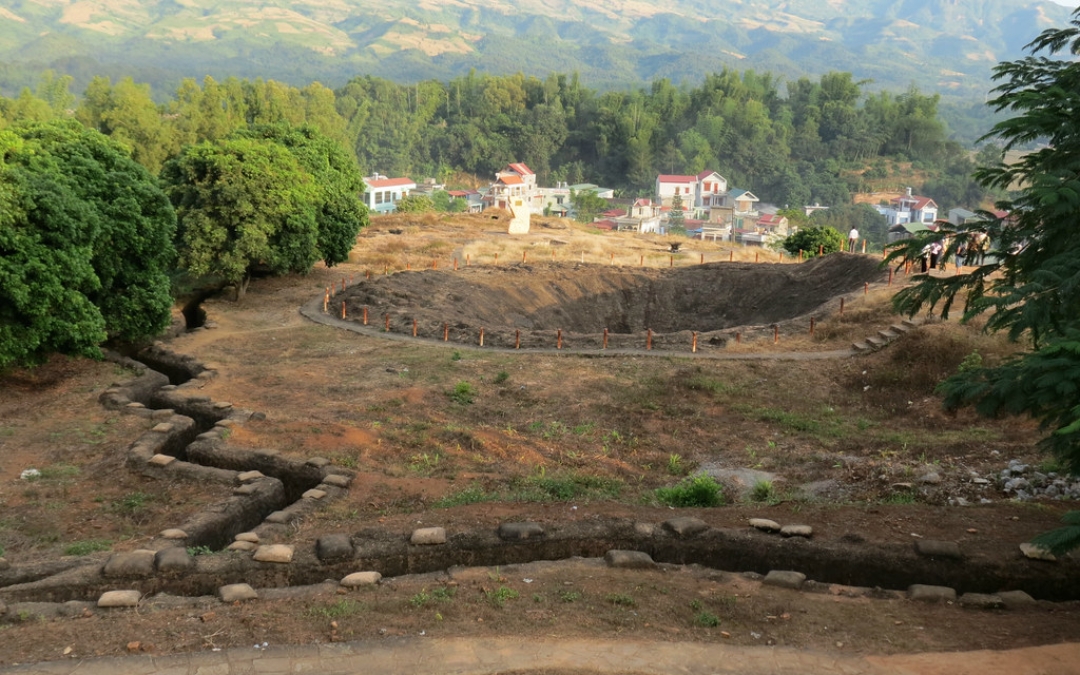
History buffs flock to Dien Bien Phu to see the battlefield of legend.
How to Visit
- Location & Transportation: Dien Bien Phu lies in a remote valley of the far northwest. The museum itself sits on National Road 279, Muong Thanh Ward, Dien Bien Phu City. From Hanoi, travelers can reach it by a one-hour flight, or by overland journeys through winding mountain passes.
- Entrance Fee: 100,000 VND (~4 USD).
- Opening Hours: 07:30–17:30 daily.
- Best Time: March–May is ideal, coinciding with the anniversary of the battle and favorable weather; avoid the heavy rains from July to September.
Tips: Allow at least half a day for the museum and memorials. Comfortable shoes are recommended, as many sites are spread across the valley.
War Remnants Museum (Ho Chi Minh City, Vietnam)
The War Remnants Museum in Ho Chi Minh City is one of the most comprehensive war sites in Vietnam, dedicated to the Vietnam War (American War) and the wider Indochina conflicts. Alongside U.S. involvement, it also covers French colonization and Vietnam’s fight for independence. Visitors will find outdoor displays of tanks and aircraft, the infamous “tiger cages,” and extensive exhibits on Agent Orange, Napalm, and war crimes.
A visit to the War Remnants Museum is both powerful and unsettling. Graphic photos, artifacts, and multimedia installations highlight the human cost of war, with the Agent Orange galleries leaving a particularly strong impression. Despite its heavy perspective, it remains a “must-see” for anyone seeking to understand Vietnam’s turbulent modern history.
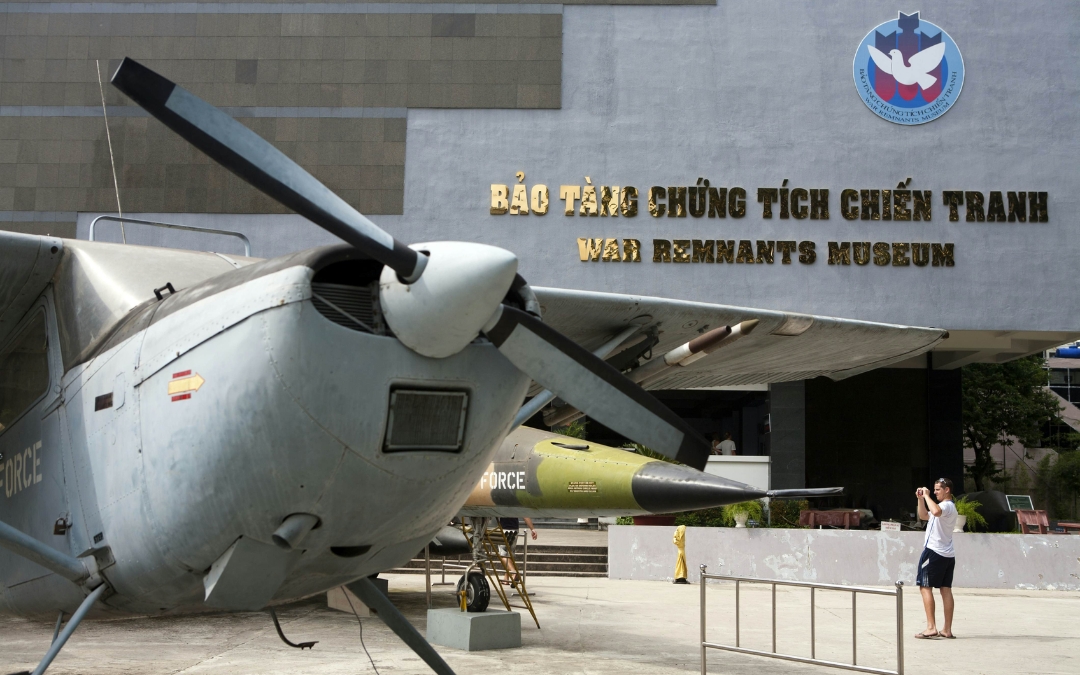
In Ho Chi Minh City, the War Remnants Museum preserves tragic memories.
How to Visit
- Location & Transportation: The museum stands at 28 Vo Van Tan, District 3, Ho Chi Minh City, easily accessible by taxi, bus, or even a short walk from the city center.
- Opening Hours: 07:30–17:30 daily.
- Entrance Fee: Adults 40,000 VND (~2 USD); Children 6–15 years 20,000 VND; under 6 free.
Tips: Be prepared for emotionally intense content. Move through exhibits at your own pace, show respect when photographing sensitive material, and allow time for reflection afterward.
>> Read More: Top 20 Fun Things to Do in Ho Chi Minh City
Cu Chi Tunnels (Near Ho Chi Minh City, Vietnam)
Among the most visited war sites in Vietnam, the Cu Chi Tunnels reveal how the Viet Cong turned the underground world into both a battlefield and a home during the Vietnam War. Stretching more than 200 km beneath the countryside, this labyrinth included supply routes, command posts, kitchens, and even makeshift hospitals. The tunnels not only shielded fighters from relentless bombings but also became a strategic weapon that helped shape the outcome of the war.
Today, travelers can enter restored sections of the tunnels, crouch through hidden passageways, and discover trapdoors, kitchens, and displays of weapons. Life-size recreations and exhibits demonstrate how people lived underground for years, offering an unforgettable and immersive view of guerrilla tactics and survival.
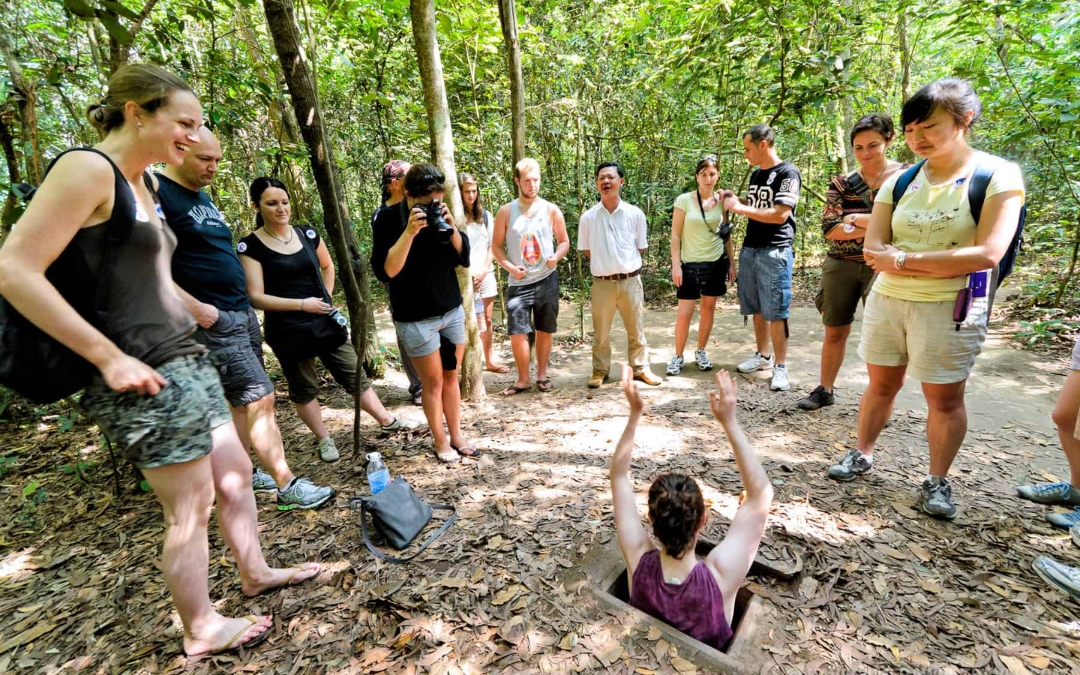
The Cu Chi Tunnels near Saigon showcase guerrilla warfare ingenuity.
How to Visit
- Location & Transportation: Around 60 km northwest of Ho Chi Minh City, the tunnels are reachable in 1.5–2 hours by car. Half-day tours from the city are popular and usually cover transport, guide services, and entrance fees.
- Opening Hours: 07:00–17:00 daily.
- Entrance Fee: About 110,000 VND (~5 USD).
- Best Time: December–April is ideal for dry weather; mornings offer fewer crowds.
Tips: Those uncomfortable with confined spaces can choose widened tunnel routes. Combine with the War Remnants Museum in Ho Chi Minh City for a deeper perspective on the Vietnam War.
>> Read More: Beyond Cu Chi – Lesser-Known Sites For Historical Tours from Ho Chi Minh City
Khe Sanh Combat Base (Quang Tri, Vietnam)
During the Vietnam War, the Khe Sanh Combat Base in Quang Tri Province was one of the most strategic U.S. military outposts. In early 1968, it became the site of a brutal 77-day siege, where North Vietnamese forces surrounded the base in what would become one of the war’s most intense battles. While the Americans considered Khe Sanh vital for controlling supply routes along the Ho Chi Minh Trail, the siege ultimately functioned as a diversion that enabled the broader Tet Offensive.
Today, the former base is preserved as a historical site and museum. Visitors can see rusting U.S. tanks, aircraft, and artillery left on the battlefield, along with photographs, documents, and personal items that tell the story of the campaign. Walking across the grounds offers a vivid sense of the scale of the battle, making Khe Sanh one of the most compelling war sites in Vietnam.
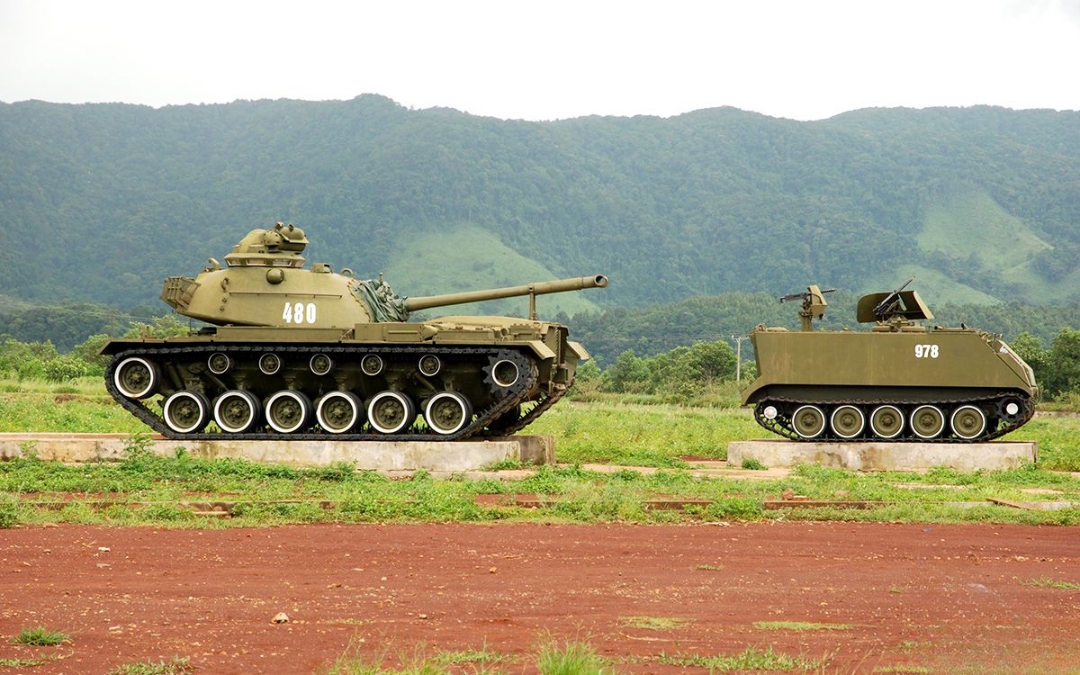
Khe Sanh Combat Base in Quang Tri recalls a pivotal clash of the war.
How to Visit
- Location & Transportation: The base lies in Huong Hoa District, Quang Tri Province, near the Laotian border (coordinates 16.627211, 106.737333). Many travelers include Khe Sanh on DMZ tours from Dong Ha or Hue. Travel from Hue takes about 5–6 hours by car, following National Road 9 along the old DMZ.
- Opening Hours: 07:00–17:00 daily.
- Entrance Fee: Around 50,000 VND (~2 USD).
- Best Time: January–April offers the most pleasant weather, as summers can be hot and humid in the highlands.
Tips: Allow at least 1–2 hours to explore. Bring water and sun protection, as much of the site is outdoors. Combining Khe Sanh with other DMZ stops provides a fuller picture of the region’s wartime history.
>> Read More: 14 Vietnam Historical Landmarks To Learn About The Country’s Intriguing Past
Viengxay Caves (Houaphanh, Laos)
The Viengxay Caves, often called an “underground city,” are among the most important war sites in Laos from the Indochina Wars. During the Laotian Civil War and the Vietnam War, the communist Pathet Lao transformed these natural limestone caves into a hidden base.
At the height of the U.S. bombing campaign (1964–1973), as many as 23,000 people lived underground, creating a self-sustaining community complete with hospitals, schools, offices, shops, and even a theatre. Visitors can join audio-guided tours that lead through leaders’ residences, the underground hospital, and the wartime theatre. These immersive stops reveal how an entire society functioned beneath the mountains during years of relentless bombing.
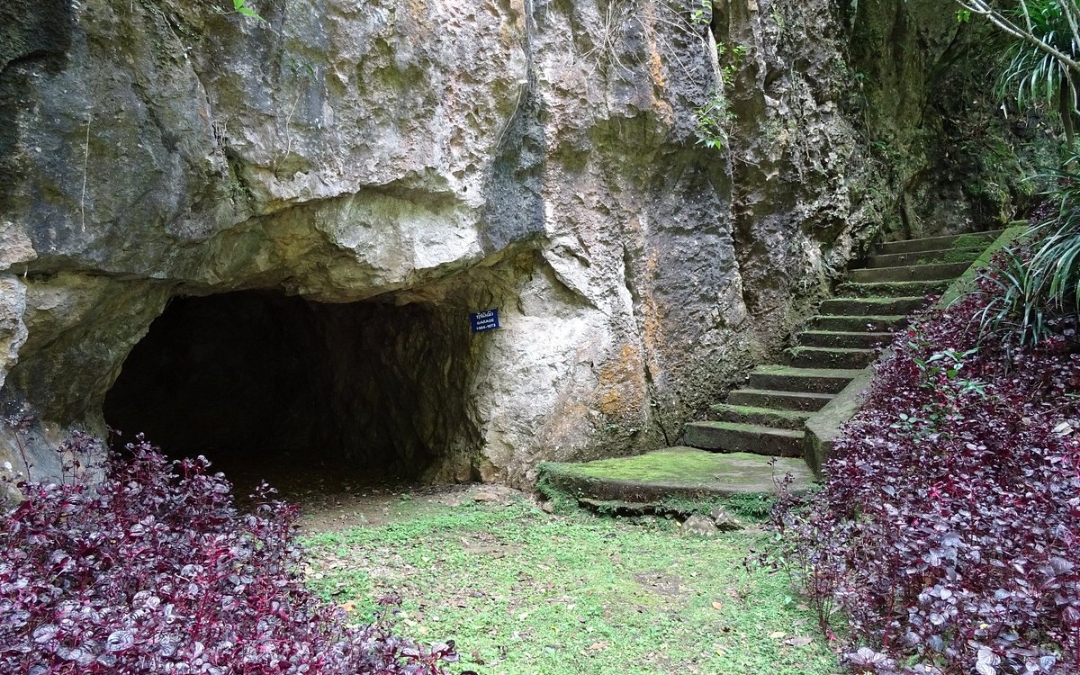
The Viengxay Caves in Laos once sheltered thousands of civilians.
How to Visit
- Location & Transportation: The caves are near Viengxay village in Houaphanh Province, about 30 km east of Sam Neua. Road access has improved, but public transport remains limited, so private car or arranged tours are the best options.
- Opening Hours: 08:00–16:00 daily.
- Entrance Fee: Around 60,000 LAK (~3–4 USD) including the audio tour.
- Best Time: October–April (dry season) ensures easier travel conditions.
Tips: Book your tour at the Visitor Centre on arrival. Allow 2–3 hours to fully explore the network.
Plain of Jars (Xieng Khouang, Laos)
The Plain of Jars in Xieng Khouang stands out as one of the most mysterious yet tragic war sites in Laos. Across the grassy hills lie hundreds of giant stone jars, believed to be over 2,000 years old, possibly used for burials or storage. This ancient landscape was later scarred during the Indochina Wars, when U.S. bombing campaigns (1964–1973) turned it into one of the most heavily bombed places on earth, leaving craters and unexploded ordnance that still remain today.
Visiting the Plain of Jars offers both wonder and reflection. Travelers walk among ancient monuments while seeing the lasting scars of modern war. Local guides lead tours through UXO-cleared zones, explaining the jars’ prehistoric origins alongside stories of wartime devastation. The site captures Laos’s dual legacy of mystery and resilience, making it an essential stop for anyone exploring war sites in Laos.
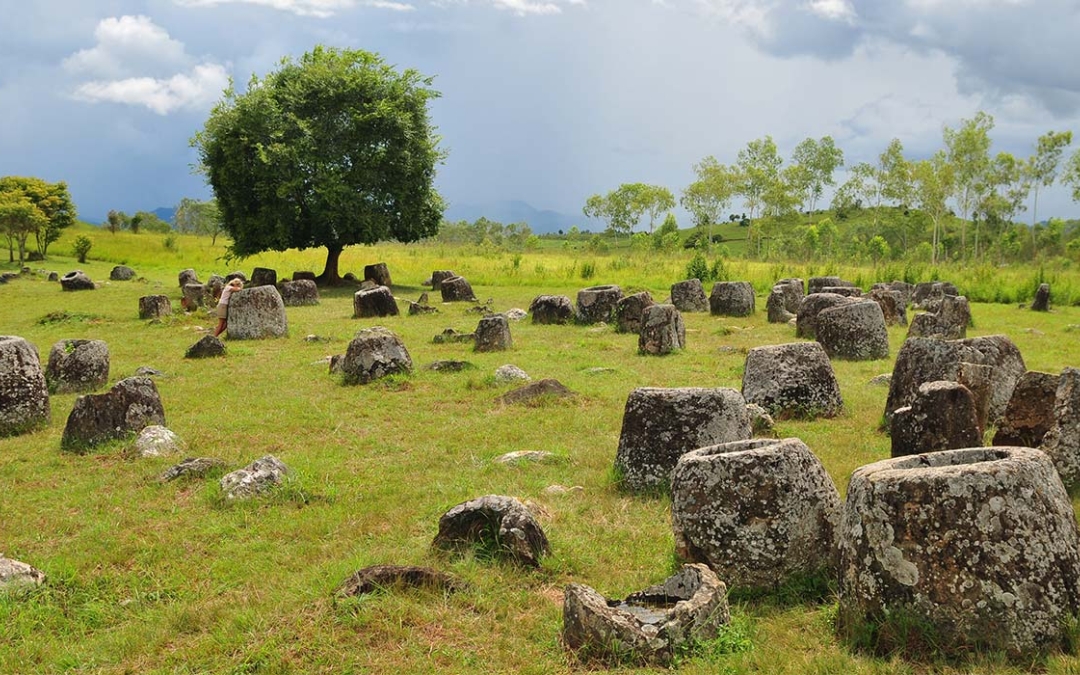
Across Xieng Khouang, the Plain of Jars remains a mysterious war site.
How to Visit
- Location & Transportation: Tours begin in Phonsavan, the capital of Xieng Khouang Province. Travelers usually reach Phonsavan by plane from Vientiane or by bus from Luang Prabang. From there, local guides take visitors to safe, cleared sites.
- Opening Hours: 08:00–17:00 daily.
- Entrance Fee: Around 15,000–20,000 LAK (~1–2 USD) per site.
- Best Time: October–April (dry season) when paths are more accessible and weather is cooler.
Tips: Always hire a local guide. They ensure safe passage through UXO-cleared areas and enrich the visit with insights into both the prehistoric jars and the wartime scars still visible in the land.
>> Read More: Where To Visit In Laos For First-time Travelers?
Tuol Sleng Genocide Museum (S-21) (Phnom Penh, Cambodia)
The Tuol Sleng Genocide Museum in Phnom Penh, once the infamous S-21 Prison, is one of the most significant war sites in Cambodia. Before 1975 it was a simple high school, but under the Khmer Rouge regime it became a center of interrogation, torture, and imprisonment. Over 17,000 people were detained here, most of whom were later executed at the Killing Fields. Today, the museum stands as a stark reminder of the genocide that decimated nearly a quarter of Cambodia’s population.
For visitors, the Tuol Sleng Genocide Museum offers an unfiltered view of this dark history. The preserved classrooms turned prison cells, haunting photographs of victims, and powerful exhibits create a deeply emotional experience. Occasional survivor testimonies add human voices to the tragedy, making it a site that is as much about remembrance as it is about education.
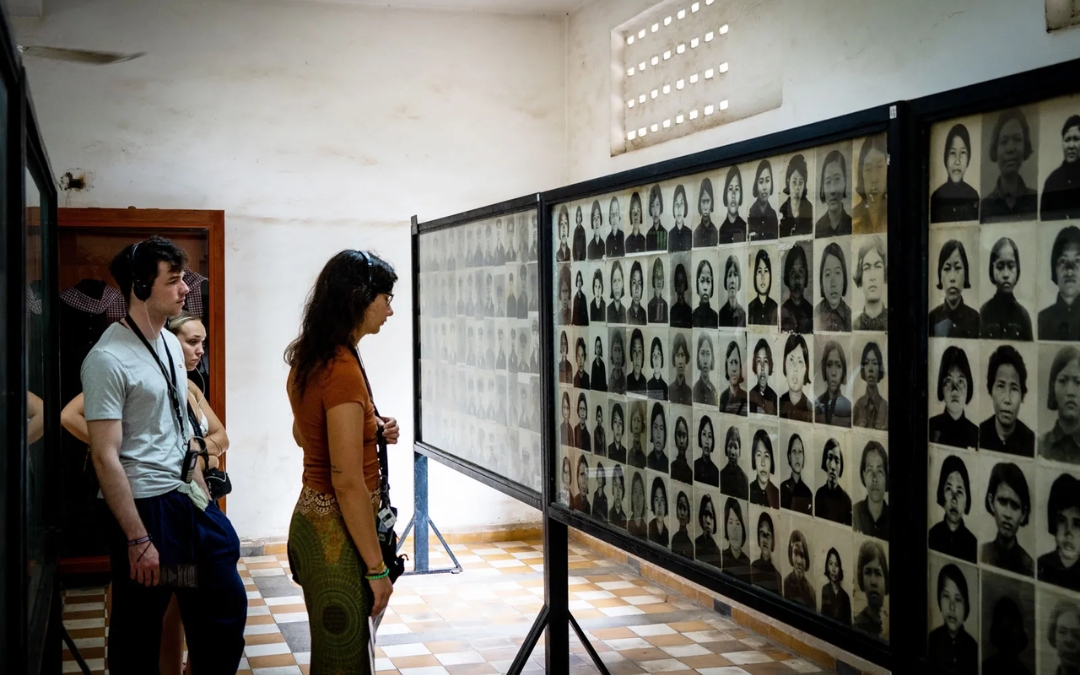
At Tuol Sleng in Phnom Penh, visitors learn Cambodia’s darkest chapter.
How to Visit
- Location & Transportation: Located in central Phnom Penh, easy to reach by tuk-tuk or taxi.
- Opening Hours: 08:00–17:00 daily.
- Entrance Fee: 10 USD; Audio guide available.
- Best Time: Visit in the morning to avoid larger groups.
Tips: Prepare for a difficult visit; follow photography rules and show respect throughout.
Choeung Ek Killing Fields (Phnom Penh, Cambodia)
The Choeung Ek Killing Fields, just outside Phnom Penh, are among the most infamous war sites in Cambodia, marking the brutality of the Khmer Rouge genocide. Once a quiet orchard, it became one of the regime’s largest execution grounds between 1975 and 1979.
Thousands of victims accused of opposing the Khmer Rouge—sometimes for reasons as arbitrary as wearing glasses or speaking a foreign language—were executed here and buried in mass graves. Today, the site stands as a powerful memorial to the estimated two million Cambodians who lost their lives during this dark period.
Visiting the Choeung Ek Killing Fields is a deeply sobering experience. A glass stupa filled with skulls honors the victims, while paths through the grounds take visitors past marked mass graves. Many travelers pair Choeung Ek with the Tuol Sleng Genocide Museum (S-21 Prison) in Phnom Penh for a fuller understanding of Cambodia’s tragic past.
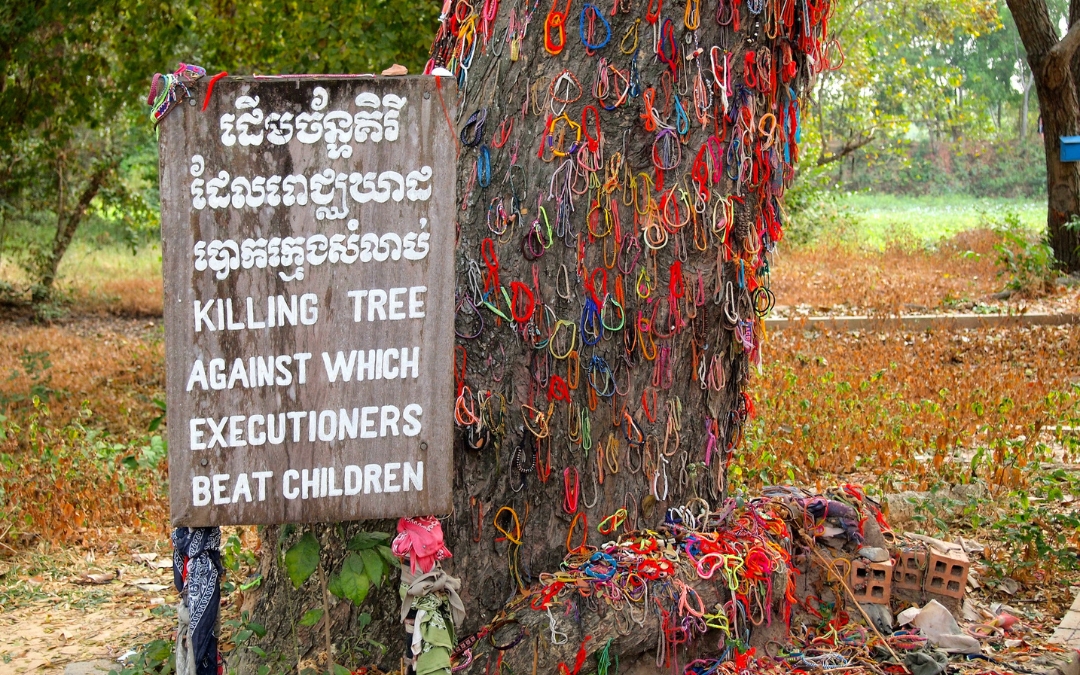
The Killing Fields of Choeung Ek commemorate victims of Khmer Rouge.
How to Visit
- Location & Transportation: About 15 km (30 minutes) south of Phnom Penh, accessible by tuk-tuk or taxi. Often combined with Tuol Sleng on half-day tours.
- Opening Hours: 08:00–17:30 daily.
- Best Time: Mornings are quieter and allow for a more reflective atmosphere.
Tips: Prepare emotionally, move quietly, and respect photography restrictions at memorial points. This is a place of mourning as much as history.
>> Read More: Cambodia Historical Places – A Glimpse Into The Country’s Past
Sample Itineraries Featuring Indochina War Sites
Embark on this Indochina tour itinerary to discover the cultural treasures and war history of Vietnam, Laos, and Cambodia. From bustling cities and ancient temples to serene rivers and haunting war sites, this journey offers the perfect balance of heritage, nature, and local life across three countries.
Day 1–3: Ho Chi Minh City & Mekong Delta
- Explore Ho Chi Minh City’s landmarks, including the War Remnants Museum, Reunification Palace, Notre Dame Cathedral, Cho Lon market, and Thien Hau Pagoda.
- Visit Cao Dai Temple and crawl through Cu Chi Tunnels. Take a private boat through the Mekong Delta, discovering Vinh Long, Sa Dec, and the Cai Rang floating market.
Day 4–5: Hoi An & My Son
- Fly to Da Nang, transfer to Hoi An. Discover the Ancient Town’s highlights like the Japanese Bridge, old merchant houses, and a lantern-making workshop.
- Ride a basket boat on the Thu Bon River and visit the Cham ruins of My Son Sanctuary.
Day 6–8: Hue Imperial City
- Drive via Hai Van Pass to Hue, stopping at Cham Museum, Marble Mountain, and Lang Co Beach.
- Visit the Imperial Citadel, Perfume River, Thien Mu Pagoda, Tu Duc’s Tomb, Khai Dinh Mausoleum, and local workshops. Enjoy a Buddhist monastery lunch before flying to Hanoi.
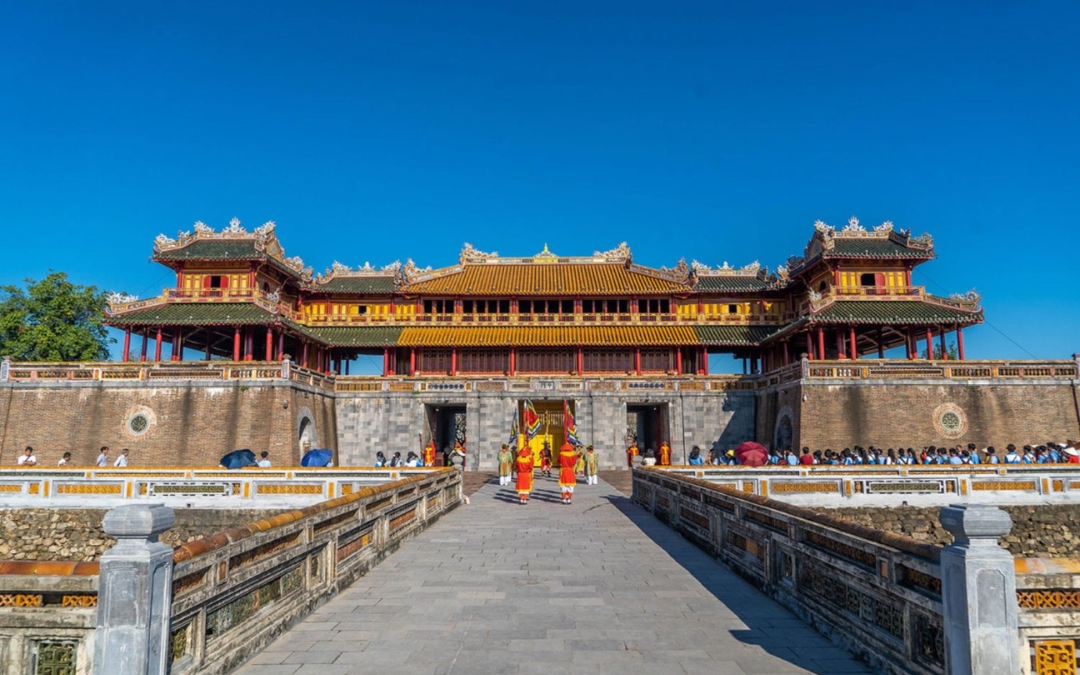
Hue Imperial City embodies Vietnam’s royal past and wartime scars.
Day 9–12: Hanoi & Sapa
- Tour Hanoi’s highlights: Ho Chi Minh Mausoleum, One Pillar Pagoda, Temple of Literature, Hoa Lo Prison, Old Quarter, and local food markets.
- Board an overnight train to Sapa to trek through Lao Chai, Ta Van villages, and colorful ethnic markets like Can Cau, Bac Ha, or Coc Ly.
Day 13–14: Halong Bay Cruise
- Travel from Hanoi to Halong Bay for a two-day, one-night cruise. Visit Sung Sot Cave, Titop Island, join Tai Chi, and explore limestone grottoes.
- Return to Hanoi for your flight to Luang Prabang.
Day 15–17: Luang Prabang & Surroundings
- Experience almsgiving, Royal Palace Museum, Wat Xiengthong, and local villages.
- Swim at Kuang Si Falls, visit Pak Ou Caves, cruise the Nam Ou River, and spend a day at an Elephant Village with trekking and Tad Sae Waterfall.
Day 18–20: Vang Vieng & Vientiane
- Drive to Vang Vieng for cave exploration, kayaking, and village visits.
- Continue to Vientiane to see Wat Sisaket, Haw Prakeo, Patuxay Monument, and That Luang Stupa.
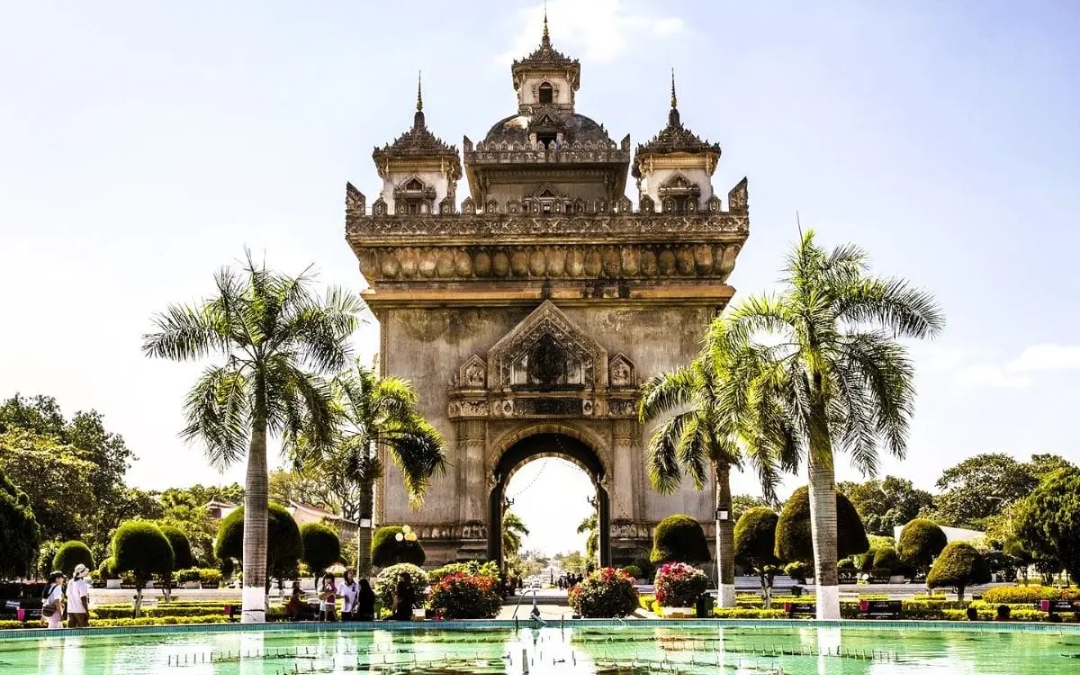
The Patuxay Monument in Vientiane honors Laos’s resilience and pride.
Day 21–23: Siem Reap & Angkor Temples
- Fly to Siem Reap. Explore Angkor Thom, Bayon, Ta Prohm, and the world wonder Angkor Wat.
- Watch sunrise at Angkor, cycle or walk lesser-known temples, and take a boat trip to Tonle Sap floating villages.
Day 24–25: Phnom Penh
- Drive to Phnom Penh via Kampong Thom, stopping at Sambor Prei Kuk and the ancient Naga Bridge.
- Visit the Royal Palace, National Museum, Wat Phnom, Tuol Sleng Genocide Museum, and the Choeung Ek Killing Fields.
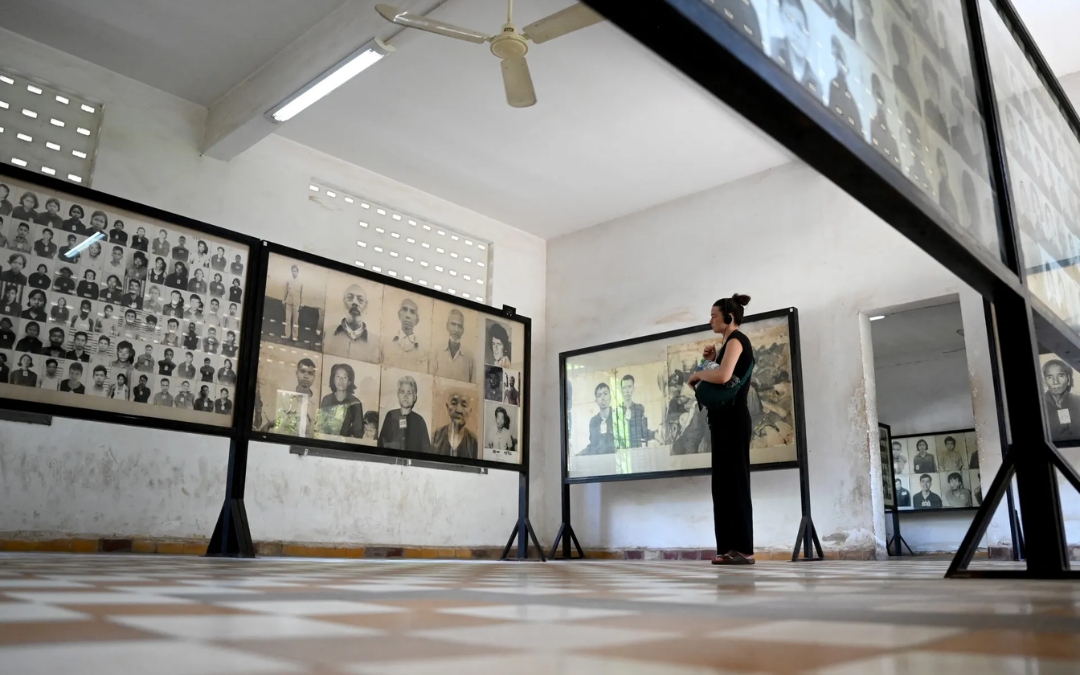
S-21, also called Tuol Sleng, echoes with haunting silence today.
Day 26: Departure
- Free time in Phnom Penh before transfer to the airport for your departure flight.
>> See The Detailed Tour: Discovery of Vietnam Laos and Cambodia
Tips and Essential Notes for Visiting Indochina War Sites
- Best time to go: The ideal season to visit Indochina war sites is from November to March, when cooler, drier weather makes exploring Vietnam, Laos, and Cambodia more comfortable.
- Getting around: Use a mix of transport—domestic flights such as Hanoi to Dien Bien for long distances, trains within Vietnam, intercity buses, or private car hire for remote areas like Viengxay Caves in Laos.
- Guides & tours: Opt for certified guides or museum-led tours at major sites like the DMZ, Tuol Sleng, and Cu Chi Tunnels. Knowledgeable guides provide accurate context, stories, and deeper insight into the history.
- Etiquette: At sensitive war memorials in Vietnam, Laos, and Cambodia, dress modestly, keep your voice low, avoid sensational photos, and always ask permission before filming or photographing survivors.
- Responsible travel: Paying entrance fees and hiring local guides directly supports heritage preservation and community livelihoods, ensuring these Indochina war sites are protected for future generations.
- What to pack: Bring closed-toe shoes for uneven terrain, a headlamp for tunnels, modest clothing, water, tissues, and a small first-aid kit. Above all, carry a respectful mindset, as these are places of memory as much as history.
Connect with Indochina’s Past – Start Your Journey Here
The Indochina war sites scattered across Vietnam, Laos, and Cambodia stand as powerful reminders of resilience, sacrifice, and survival. Walking through these tunnels, caves, museums, and memorials allows travelers to not only witness history but also reflect on the human stories behind it.
If you’re ready to explore these remarkable places, let Asia Pioneer Travel design your journey. With tailor-made itineraries and expert local guides, we ensure you’ll experience the most meaningful war sites in Indochina while discovering the culture and beauty of the region. Contact us today to start planning your unforgettable trip.

